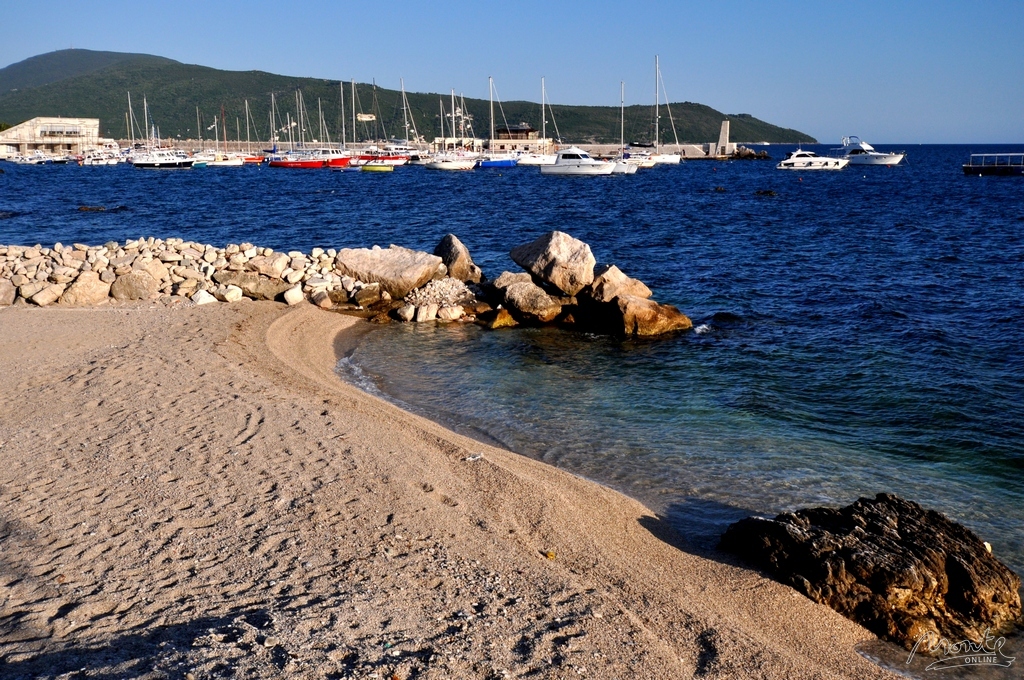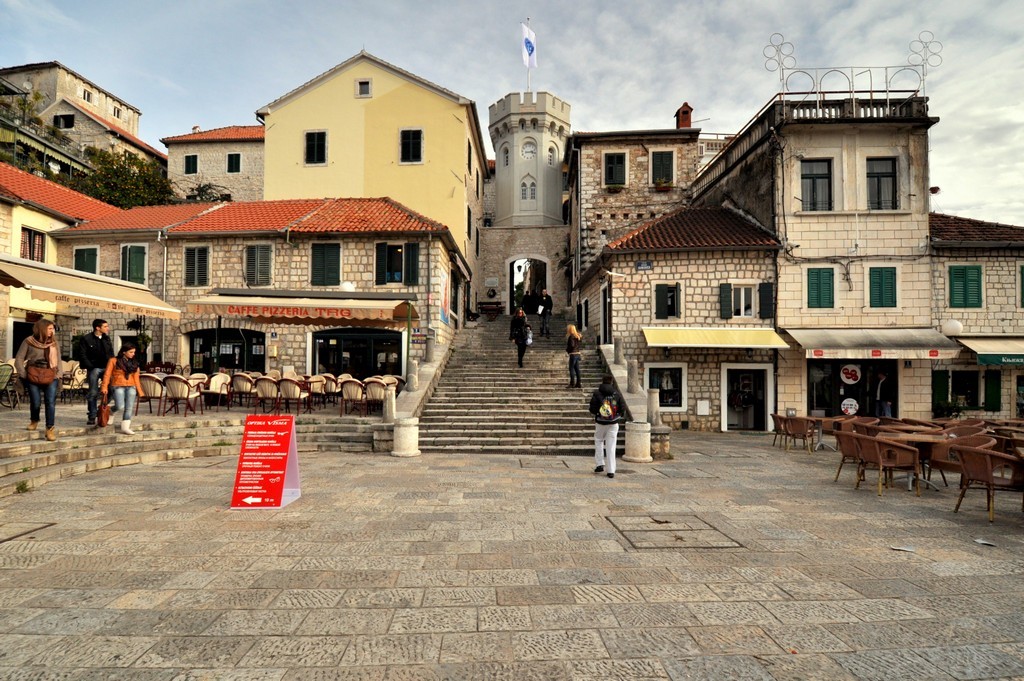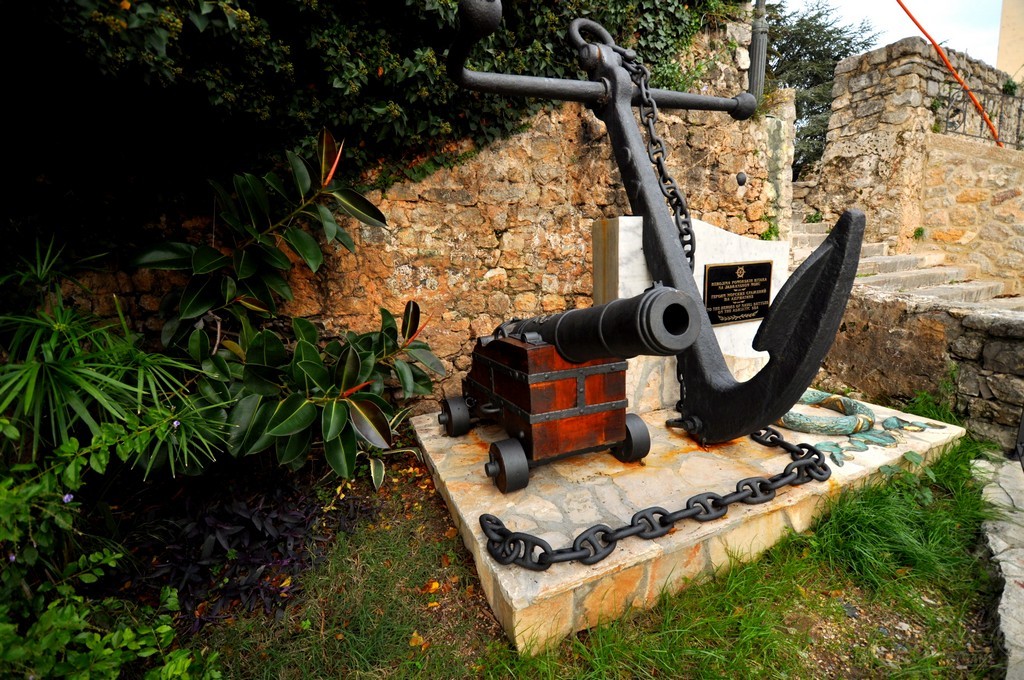Herceg Novi, Montenegro (see on Montenegro map), nestled comfortably on the steep foot of the Orien mountain range, at the mouth Bay of Kotor. A favorite vacation spot of the 19th century Viennese bourgeoisie, today Herceg Novi is fragrant in the noble shade of clay, bougainvillea, palm and orange trees, without losing its former charm.
Herceg Novi is one of the busiest cities in the Bay of Kotor, with the longest promenade for walking, connecting the districts (and in the past independent settlements) Igalo, Topla, Center and Savino. As elsewhere in the Bay of Kotor, the bulk of the beaches are concrete pontoons, but there are also sand and pebble beaches (for example, the equipped Rafaelo beach near the cafe of the same name). The beaches in Igalo are famous for their healing mud, useful for the treatment of diseases of the musculoskeletal system, in this regard, a large Mediterranean medical and tourist center operates in Igalo - Ighalo Institutespecializing in the treatment, prevention and rehabilitation after many diseases.

A LITTLE HISTORY
The founder of Herceg Novi was the Bosnian King Tvrtko, who founded this coastal town in 1382 for strategic reasons. Subsequently, Herceg Novi's strategic importance ensured its turbulent history and frequent changes of rulers and lords. Most of the surviving buildings belong to the Venetians, Turks, and Austro-Hungarians. The city's name itself, Herceg Novi (or Herceg Novi), dates back to the mid-15th century and the reign of Duke Sćepan Vukšić Kosač, the Serbian ruler of Bosnia, who built most of the city's fortifications. In 1482, Herceg Novi was conquered by the Turks. In 1583, the city briefly fell into Spanish hands. It was only in 1687 that Herceg Novi came under the control of the Venetian Republic, which ruled the area until 1797, when it was replaced by Austria. Subsequently, control of the city alternately passed between Russia, France, and Austria-Hungary. Following World War II, Herceg Novi became part of the Republic of Montenegro.
SIGHTS IN HERCEG NOVI
The glorious past of Herceg Novi is witnessed by his fortresses and Old citywhich attracts crowds of tourists every year. To get to the old town, you will have to overcome more than one flight of stairs - the whole city is located on a slope, and only the embankment is flat, for which Herceg Novi was nicknamed the city of steps. In addition to the old town of Herceg Novi, be sure to visit the Spanish Fort and the idyllic Savina Monastery, offering a magnificent panoramic view of the city and Boka Kotorska Bay. Be sure to stroll along the promenade, which experienced travelers call "Šetalište Pet Danica" (after the street name), which in Serbian means "Pet Danica Promenade." It's the longest promenade in Montenegro, connecting Igalo and Savino and stretching for a whopping 7 kilometers! Along the way, you'll encounter numerous restaurants and taverns (also known as "inns"), souvenir shops, and beaches.



Start inspection old town of Herceg Novi from Nikola Dzhurkovic Square, overlooked by the Sakhat Kula clock tower (1850), have a “kafa” in one of the cafes and climb the steps leading to the clock tower (if you turn right at this moment and go down the stairs, you will find yourself on the promenade). The main square of the old town is the ancient square of Herceg Stjepan, in the center of which rises Church of St. Michael the Archangel. Do not be deceived by the seeming antiquity of this church surrounded by palm trees - it was built only in 1900 and has a little more than one century, which will surprise few people in Montenegro 🙂 Not far from the church, the exquisite Karacha drinking fountain attracts attention. The city is surrounded by towers and preserved fortification walls, which are crowned by a well-preserved Kanli Kula ("Blood Tower") XVI century, during the rule of the Ottoman Empire, it managed to serve as a prison. Now it is a venue for festive city events, theater and film screenings, and at other times it is open to tourists (they charge 2 euros for admission, 2012) - be sure to visit this fortress to take panoramic pictures of the old city, the Bay of Kotor, and peninsulas Lustica. Above the city is another fortress - Spanish fort (Tvrđava Španjola), named so on the occasion of the capture of the city by the Spaniards in 1583.



Going down the streets of the old city, you will invariably come out to the promenade - just head towards the sea and you can't go wrong. Interesting fact: from 1936 to 1967. the railway ran along the embankment (the former building of the railway station is now used as a hotel!). At a distance of 1 kilometer from the harbor is the city museum (Grad muzej), st. Mirka Komnenovicha 9, which contains items related to the maritime past of the city, as well as a collection of wooden icons. Nearby is a house (Negosheva street, 65), where a famous Yugoslav writer once lived Ivo Andricawarded Nobel Prize in Literature (1961) for the novel "The Bridge on the Drina", in which the author describes historical events up to the Sarajevo assassination, which served as a pretext for the outbreak of the First World War. The novel "The Bridge on the Drina" is also interesting from the point of view of understanding the culture of the Balkans.
Herceg Novi is considered one of the greenest cities on the Bay of Kotor, it is an excellent starting point for exploring the bay, marked hiking trails begin here for those wishing to conquer the Orjen mountain range. A developed private residential sector and a large number of hotels make it possible to comfortably accommodate everyone who wants to relax surrounded by sun, sea and mountains.
This is interesting! In Herceg Novi in February is held annually mimosa festival, about this interesting event read on our blog.


HOW TO GET TO HERCEG NOVI, MONTENEGRO
Herceg Novi is connected to most of the coastal cities of Montenegro, as well as to Dubrovnik (Croatia) by bus service. You can also use the services of taxi drivers who "attack" you upon arrival at the airport in Tivat or Podgorica. Those who do not want to depend on the whims of airport taxi drivers can use the services of a transfer from private companies by ordering a meeting and delivery to their destination in advance. The cost of the transfer will be slightly higher, but it will more than pay for the saved time and nerves. If you are planning to rent a car in Montenegro, you can order a car delivery directly to the airport by the time of your flight, saving on a transfer / taxi (approx. 56 km along the coast of the Bay of Kotor).





